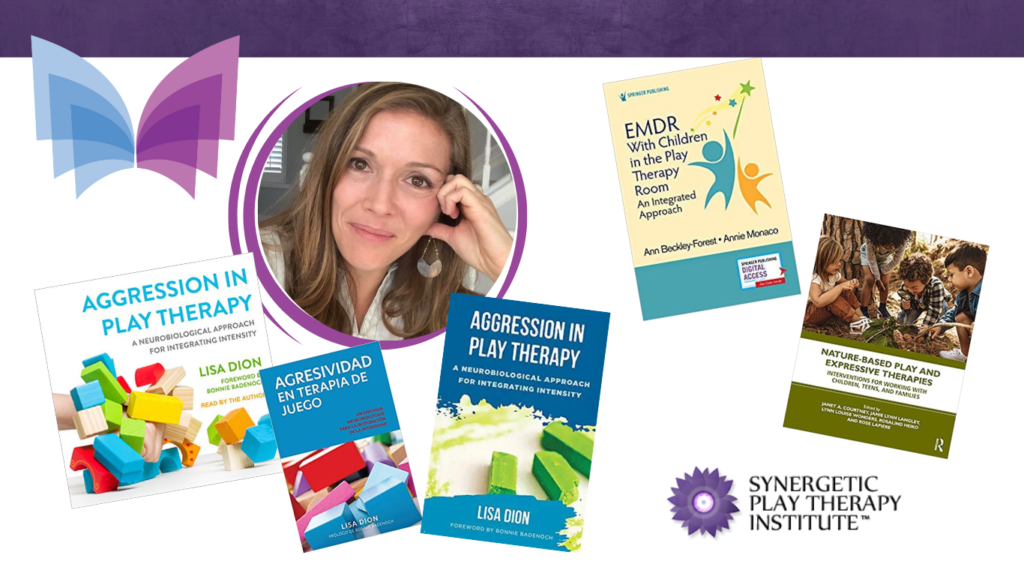Through the lens of neuroscience and interpersonal neurobiology, therapists are taught how to integrate the intensity experienced by both the child and the therapist during aggressive play in a way that leads towards greater healing and integration. Aggression in Play Therapy: A Neurobiological Approach for Integrating Intensity explains the neurological processes that lead kids to dysregulation and provides therapists with tools to help their clients facilitate deep emotional healing, without causing their own nervous system to shut down

Aggression in Play Therapy: A Neurobiological Approach for Integrating Intensity offers play therapists practical ways of handling a pervasive issue with intense and aggressive play by their clients.
With an understanding of aggressive play based on brain function and neuroscience, this book provides therapists with a framework to work authentically with aggressive play, while making it an integrative and therapeutic experience for the child.
Topics covered include: embracing aggression; understanding the nervous system; understanding regulation; developing yourself as an external regulator; authentic expression; setting boundaries; working with emotional flooding; supporting parents during aggressive play.
Buy Your Copy Today! (use code LDION21 for a 25% discount)
The book is also currently available in Audio format and two translations: Spanish and Japanese!
GET CREDITS! Read the book and get 6 APT Non-Contact CE Credits by taking the book study course on our SPTI Learning website.
Write a review and let us know what you think! Click here to read reviews
Other books to read that Lisa Dion has contributed to:
- Play Therapy Treatment Planning with Children and Families: A Guide for Mental Health Professionals (Chapter: “A Synergetic Play Therapy Approach to Treatment Planning” by Judith Norman and Lisa Dion)
- Polyvagal Power in the Playroom: A Guide for Play Therapists (Chapter: “Polyvagal Theory and Play Therapy with Children Who Exhibit Aggression” by David Crenshaw and Lisa Dion)
- EMDR with Children in the Play Therapy Room: An Integrated Approach (Chapter: “Synergetic Play Therapy Combined With EMDR Therapy” by Jan Schaad and Lisa Dion)
- Nature-Based Play and Expressive Therapies: Interventions for Working with Children, Teens, and Families (Chapter: “Using Nature to Create Safety for Medical Trauma Integration” by Rose LaPiere and Lisa Dion)
Through the lens of neuroscience and interpersonal neurobiology, therapists are taught how to integrate the intensity experienced by both the child and the therapist during aggressive play in a way that leads towards greater healing and integration. Aggression in Play Therapy: A Neurobiological Approach for Integrating Intensity explains the neurological processes that lead kids to dysregulation and provides therapists with tools to help their clients facilitate deep emotional healing, without causing their own nervous system to shut down

Aggression in Play Therapy: A Neurobiological Approach for Integrating Intensity offers play therapists practical ways of handling a pervasive issue with intense and aggressive play by their clients.
With an understanding of aggressive play based on brain function and neuroscience, this book provides therapists with a framework to work authentically with aggressive play, while making it an integrative and therapeutic experience for the child.
Topics covered include: embracing aggression; understanding the nervous system; understanding regulation; developing yourself as an external regulator; authentic expression; setting boundaries; working with emotional flooding; supporting parents during aggressive play.
Buy Your Copy Today! (use code LDION21 for a 25% discount)
The book is also currently available in Audio format and two translations: Spanish and Japanese!
GET CREDITS! Read the book and get 6 APT Non-Contact CE Credits by taking the book study course on our SPTI Learning website.
Write a review and let us know what you think! Click here to read reviews
Other books to read that Lisa Dion has contributed to:
- Play Therapy Treatment Planning with Children and Families: A Guide for Mental Health Professionals (Chapter: “A Synergetic Play Therapy Approach to Treatment Planning” by Judith Norman and Lisa Dion)
- Polyvagal Power in the Playroom: A Guide for Play Therapists (Chapter: “Polyvagal Theory and Play Therapy with Children Who Exhibit Aggression” by David Crenshaw and Lisa Dion)
- EMDR with Children in the Play Therapy Room: An Integrated Approach (Chapter: “Synergetic Play Therapy Combined With EMDR Therapy” by Jan Schaad and Lisa Dion)
- Nature-Based Play and Expressive Therapies: Interventions for Working with Children, Teens, and Families (Chapter: “Using Nature to Create Safety for Medical Trauma Integration” by Rose LaPiere and Lisa Dion)

